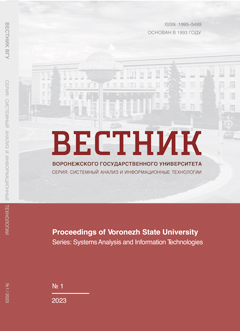A cognitive computing conceptual model for agile e-government design
Аннотация
Studies have linked e-government failures (primarily its adoption and development) to factors such as design shortcomings and design-reality gaps. With the increased availability of big data and analytical techniques, government agencies must leverage data-driven models in the design and implementation of electronic government (e-government) or digital government solutions. By doing so, minimizing design-reality gap problems and design shortcomings is attainable. Backed by stakeholder theory and the Agile design methodology, this study proposes a cognitive computing framework as an efficient approach to the design of public sector electronic services (e-services) so as to obtain value. Cognitive computing was deemed appropriate for inclusion into the Agile methodology for e-government design because of its rapid frequency of expansion of data for which the human mind is limited in analytical ability as well as the desire by policy makers to reduce burdens and cost against the desire for more tailored solutions. With respect to research, cognitive computing models present a novel means of implementing human-centric and data-driven processes into practical domains of discourse and these models have yet to be integrated into the e-government sphere. By applying design thinking, the proposed model is built and tested in the UPPAAL model-checking software by applying the principle of finite state deterministic automatons. Theoretical and practical contributions are made to the fields of e-government, Agile methodology, and quality service delivery. Future research recommendations for expansion and building evaluation metrics are also indicated in the study.
Скачивания
Литература
2. Porter C. Design Shortcomings in E-Service Enrolment Processes: Recommendations From an HCI Perspective // International Journal of E Services and Mobile Applications (IJESMA). 2018. Vol. 10, No 3. P. 1–18.
3. Anthopoulos L. et al. Why e-government projects fail? An analysis of the Healthcare.gov website // Government Information Quarterly. 2016. Vol. 33, No 1. P. 161–173.
4. Martin P. W. District Court Opinions That Remain Hidden Despite a Long-Standing Congressional Mandate of Transparency - the Result of Judicial Autonomy and Systemic Indifference // Law Libr. J. 2018. Vol. 110. P. 305.
5. Joseph B. K. Designing Effervescent E-Government Solutions: Lessons from a Developing World Context // International E-Government Development : Policy, Implementation and Best Practice / ed. Alcaide Muñoz L., Rodríguez Bolívar M.P. Cham: Springer International Publishing, 2018. P. 187–211.
6. Demirel S. et al. Agile software development project evaluation using the partial least squares–structural equation modelling (PLS-SEM) approach in view of critical success indicators // Global Journal of Information Technology: Emerging Technologies. 2017. Vol. 7, No 3. P. 99–115.
7. Lim C. D. et al. Local government unit analytics for program planning & policy-making in Caloocan city // TENCON 2017-2017 IEEE Region 10 Conference. IEEE, 2017. P. 2830–2834.
8. Torrecilla-Salinas C. et al. Agile in Public Administration: Oxymoron or reality? An experience report // CEUR Workshop Proceedings. 2013. Vol. 1017. P. 1–8.
9. Simonofski A. et al. From Traditional to Agile E-Government Service Development: Starting from Practitioners’ Challenges. 2018.
10. Roy S., Debnath M. K. Designing SOA based e-governance system using eXtreme Programming methodology for developing countries // 2010 2nd International conference on software technology and engineering. IEEE, 2010. Vol. 2. P. V2–277.
11. Niemöller J., Mokrushin L. Cognitive technologies in network and business automation [Electronic resource] // Ericsson.com. 2018. URL: URL.
12. Knowles S. Cognitive Computing Creates Value In Healthcare and Shows Potential for Business Value // Mathematics and Computer Science Capstones. 2016. Vol. 26. P. 46.
13. Zheng N. et al. Hybrid-augmented intelligence: collaboration and cognition // Frontiers Inf Technol Electronic Eng. 2017. Vol. 18, No 2. P. 153–179.
14. Kaur S. et al. Organizational ambidexterity through global strategic partnerships: A cognitive computing perspective // Technological Forecasting and Social Change. 2019. Vol. 145. P. 43–54.
15. Sabarmathi K., Leelavathi R. Application of Cognitive Computing in Healthcare // Cognitive Social Mining Applications in Data Analytics and Forensics. IGI Global, 2019. P. 265–272.
16. Gupta S. et al. Big data with cognitive computing: A review for the future // International Journal of Information Management. 2018. Vol. 42. P. 78–89.
17. Pae Y.-W. et al. A Study on the Acceptance Factors of Healthcare Information Services Converged with Cognitive Computing // Journal of KIISE. 2015. Vol. 42, No 6. P. 734–747.
18. Mansouri M., Khansari N. A Conceptual Model for Intelligent Urban Governance: Influencing Energy Behaviour in Cognitive Cities // Designing Cognitive Cities / ed. Portmann E. et al. Cham: Springer International Publishing, 2019. P. 185–202.
19. Li J. et al. Research and Design on Cognitive Computing Framework for Predicting Judicial Decisions // J Sign Process Syst. 2019. Vol. 91, No 10. P. 1159–1167.
20. Barbon Junior S. et al. A framework for human-in-the-loop monitoring of concept-drift detection in event log stream // Companion Proceedings of the The Web Conference 2018. 2018. P. 319–326.
21. Smit M. Converged Reality: A Data Management Research Agenda for a Service-, Cloud-, and Data-Driven Era // 2016 49th Hawaii International Conference on System Sciences (HICSS). IEEE, 2016. P. 1653–1662.
22. Moreno M. F., Brandão R., Cerqueira R. Challenges on Multimedia for Decision-Making in the Era of Cognitive Computing // 2016 IEEE International Symposium on Multimedia (ISM). 2016. P. 673–678.
23. Taveter K., Meriste M. How Can Agents Help in Designing Complex Systems? // Journal of Telecommunication, Electronic and Computer Engineering (JTEC). 2017. Vol. 9, No 2–9. P. 1–8.
24. Brown T. Design thinking // Harvard business review. 2008. Vol. 86, No 6. P. 84.
25. Brown T. Why social innovators need design thinking // Stanford Social Innovation Review. 2011. Vol. 15.
26. Chou D. C. Applying design thinking method to social entrepreneurship project // Computer Standards & Interfaces. 2018. Vol. 55. P. 73 79.
27. Hessel A. et al. Testing Real-Time Systems Using UPPAAL // Formal Methods and Testing / ed. Hierons R.M., Bowen J.P., Harman M. Berlin, Heidelberg: Springer Berlin Heidelberg, 2008. Vol. 4949. P. 77–117.
28. Yasin D., Saghar K., Younis S. Formal modeling and verification of Rumor Routing protocol //2016 13th international Bhurban conference on applied sciences and technology (IB-CAST). – IEEE, 2016. – P. 318-323.
29. Ye P. et al. TKRM: A Formal Knowledge Representation Method for Typhoon Events // Sustainability. – 2020. – Т. 12. – No 5. – P. 2030.
30. Noor M. et al. Vendors’ Challenges in e-Government Projects in Pakistan: Experience Report of Prisons Automation // European Conference on e-Government. Academic Conferences International Limited, 2014. P. 189.
31.A - Ghana: GCNet to Shut Down On Monday ... As ICUMS Takes Over. [Electronic Resource]. Available at: URL.
32. Ghana Community Network System (GCNet). [Electronic Resource]. Available at: URL.
33. Ghana: Clearing Agents, Importers Stranded At Tema Port ... As GCNet Shuts Down. [Electronic Resource]. Available at: URL.
34. The Ghana Revenue Authority Calls for the Return of the GCNET and West Blue Port Systems following Failures in the Integrated Customs Management System (ICUMS)/UNIPASS. [Electronic Resource]. Available at: URL.
35.Ahmad R., Kyratsis Y., Holmes A. When the user is not the chooser: learning from stakeholder involvement in technology adoption decisions in infection control // Journal of Hospital Infection. – 2012. – Т. 81, No 3. – С. 163-168.
36. Larsen K. G., Pettersson P., Yi W. Uppaal in a nutshell // STTT. 1997. Vol. 1, No 1–2. P. 134–152.
37. Bwalya K. J., Mutula S. A conceptual framework for e-government development in resource-constrained countries: The case of Zambia // Information Development. 2016. Vol. 32, No 4. P. 1183–1198.
- Авторы сохраняют за собой авторские права и предоставляют журналу право первой публикации работы, которая по истечении 6 месяцев после публикации автоматически лицензируется на условиях Creative Commons Attribution License , которая позволяет другим распространять данную работу с обязательным сохранением ссылок на авторов оригинальной работы и оригинальную публикацию в этом журнале.
- Авторы имеют право размещать их работу в сети Интернет (например в институтском хранилище или персональном сайте) до и во время процесса рассмотрения ее данным журналом, так как это может привести к продуктивному обсуждению и большему количеству ссылок на данную работу (См. The Effect of Open Access).



















